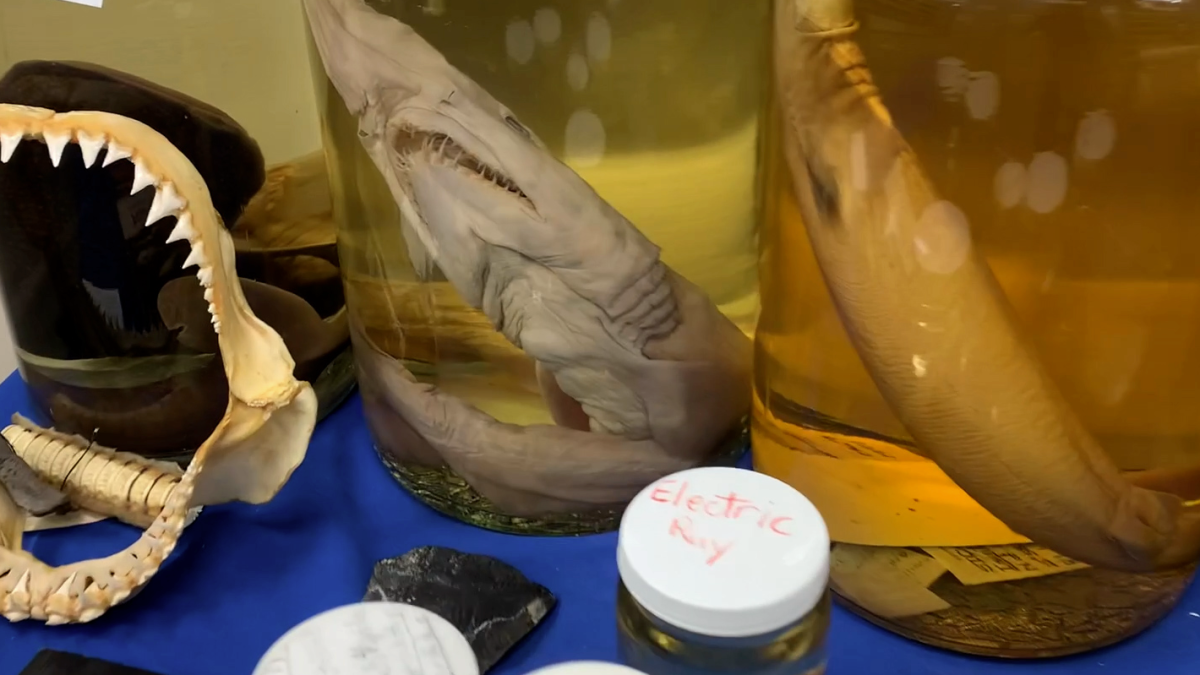Inside San Diego’s Fish ‘Library’ – With the Scientist Who Runs It – NBC 7 San Diego
Some of the coolest things in San Diego are off-limits: the grass at Petco Park, the Shell scene on San Diego Bay, the collection of marine vertebrates at the Scripps Institution of Oceanography.
The collection what what?
Almost all San Diegans are ocean life nerds – they peer into the Home Depot 5-gallon fisherman’s bucket at Crystal Pier, they kneel for hours in the tide pools of Sunset Cliffs, they check out the blue waves iridescent shimmer, no matter how bad it smells.
The institute was officially founded in 1903 and since then it has collected, acquired and collected numerous specimens of 6,000 species of fish.
So when we had the chance to reconnect with Ben Frable, the director of the Scripps collection of marine vertebrates, this time at his fish factory a few blocks from the water, we were hooked, forgive the game of words.
Frable, a 33-year-old gregarious with a master’s degree in fisheries science and ichthyology (“I think? Haha never paid too much attention to the full title”), struggles on the Navy floor invertebrate collection, in a windowless laboratory, surrounded by approximately 2 million vertebrates biding their time in tubs, jars and other glassware.
Surfers in wetsuits weave their way past the somewhat nondescript exterior of a building that houses the collection, its weathered linoleum floors and beige paintwork reminiscent of its 1960s beginnings. Inside, Frable, a fan of craft brew bearded and dressed in flannel, spends his days surrounded by the many vertebrates in the bottle.
“When I say marine vertebrate, I’m talking about things with backbones,” Frable said. “We call it the marine vertebrate collection, but we focus almost exclusively on fish. It’s the largest group of vertebrates. There are about 36,000 of them, and that’s more than all the birds, mammals , reptiles and amphibians together.”
The institute was officially founded in 1903 and since then it has collected, acquired and collected numerous specimens of 6,000 species. In fact, they have so many specimens that they aren’t exactly what they have.
“There’s still a lot of material that hasn’t been fully identified,” Frable said, “and there’s…I’m sure there’s probably some undescribed species that’s on a shelf there. .”
Collection Highlights
There are hundreds and hundreds of feet of shelves containing the collection, many of them in yellowing liquid, some as old as a sockeye salmon Frable showed us that was caught in 1886.
Among the rarities are, of course, a footballfish, a pair of which washed up in San Diego last fall, as well as a coelacanth (sēləˌkanTH), a prehistoric meter fish acquired in the 1960s.
“They’re very abundant in the fossil record,” Frable said. “They kind of started disappearing about 70 million years ago, so just before the extinction of the dinosaurs.” But, lo and behold, in the 1930s, a fisherman brought one to the curator of a small museum in South Africa.”
The curator didn’t recognize the fish, Frable said, but she asked a curator from another museum who knew prehistoric fish better.
“He saw her drawing and immediately was like, ‘Wow! What is this?’ It turned out to be this fish called a coelacanth that was presumably extinct 70 million years ago,” the collections manager said.
Frable never tires of going to work, he says.
“One thing I really love about this job is that you never really know what’s on your plate the day I walk into the office,” Frable said. “I might get an email saying, ‘Hey, I have to come visit you’, or we actually mail fish to people all over the world. »
Frable chuckled at the thought. It seems like he does it often.
Still curious? the Birch Aquarium has an Oddities Exhibitwith a few rarities from the collection on public view, including the footballfish that washed up near the oceanographic institution last year.
Looking back
Here are more NBC 7 stories looking back at San Diego’s remarkable marine life:
The creature was a Pacific football fish, a type of deep-sea anglerfish made famous in ‘Finding Nemo’ that has a small bioluminescent light on top of its head that acts as a decoy
A walk on Black’s Beach, a day like hundreds of others, held a shocking surprise for a San Diego man one weekend last fall.
Patrick Coyne (@patrickc_la) captured the dolphins swimming through the waves, appearing as swirling blue streaks in the ocean.
Crimson Tide. Bioluminescence. Algae bloom. You know those super cool electric blue waves? Whatever you call them, they were back earlier this month on San Diego County beaches.
In December, swimmers north of La Jolla Shores discovered a 4-foot live spear that had washed ashore.


Comments are closed.